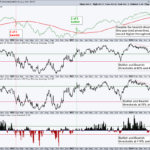
Is this Bounce a Robust Rebound or a Dead-Cat Bounce?
Breadth became oversold last week and stocks rebounded this week. Is this a robust rebound or a dead cat bounce? Today’s report will show a key short-term breadth indicator hitting its lowest level in 2024 and becoming oversold. A rebound is in place, but it is still to early to call this a robust rebound and we will show the critical level to watch.























